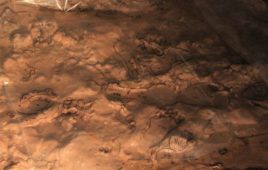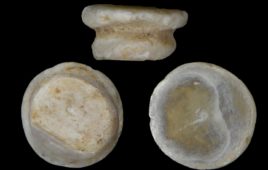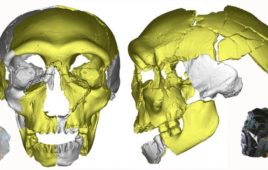 Close to half the world’s population are at risk for malaria, according to the World Health Organization. In 2015, there were 214 million cases of the disease, and 438,000 deaths attributed to it. For more than 4,000 years, references to a disease resembling malaria has popped up in texts. But the disease’s story, as with other infectious diseases, predates the written word and humanity.
Close to half the world’s population are at risk for malaria, according to the World Health Organization. In 2015, there were 214 million cases of the disease, and 438,000 deaths attributed to it. For more than 4,000 years, references to a disease resembling malaria has popped up in texts. But the disease’s story, as with other infectious diseases, predates the written word and humanity.
Publishing in American Entomologist, George Poinar of Oregon State University, has hypothesized that malaria can trace its origin in animals back 100 million years to insects.
“Malarial vectors are ancient, as demonstrated by the early mid-Cretaceous female biting midge of the extinct genus Protoculicoides infected with Paleohaemoproteus burmacis,” a malarial parasite, Poinar wrote in his study.
For decades, scientists have debated whether malaria originated in insects or prehistoric reptiles. Modern malaria can be traced back 20 million years to modern mosquitos, who acted as vectors for the disease. Other vectors of reptilian malaria include sand flies and horse flies. “Of these, biting midges are the most ancient, with fossils dating back to 140 million years ago,” Poinar wrote.
Poinar postulated insects must be thought of as the disease’s primary host, as malaria’s sexual cycle plays out within insects. He also pointed to the protozoa group Gregarinida as the progenitors of the disease as they infect modern insects that vector malaria.
“The gregarine parasite could have already infected lineages of the vectors before they became blood-feeders, with the two organisms undergoing a long period of co-evolution,” Poinar wrote.
Previously, Poinar argued that malaria may have had a huge impact on the mass dinosaur extinction 65 million years ago. Along with his wife Roberta Poinar, he co-authored the book “What Bugged the Dinosaurs? Insects, Disease, and Death in the Cretaceous.”
“There were catastrophic events known to have happened around that time, such as asteroid impacts and lava flows,” Poinar said in a statement. “But it’s still clear that dinosaurs declined and slowly became extinct over thousands of years, which suggests other issues must also have been at work. Insects, microbial pathogens, and vertebrae diseases were just emerging around the same time, including malaria.”
According to Poinar, a comprehensive understanding of malaria’s history may help scientists discover methods to inhibit its transmission from mosquitos.
R&D 100 AWARD ENTRIES NOW OPEN:
Establish your company as a technology leader! For more than 50 years, the R&D 100 Awards have showcased new products of technological significance. You can join this exclusive community! Learn more.




